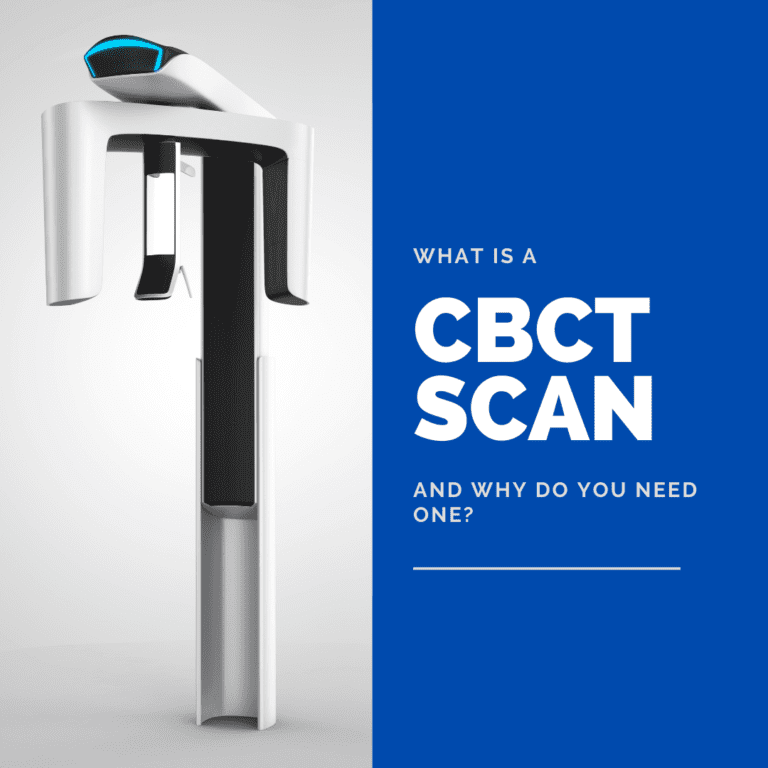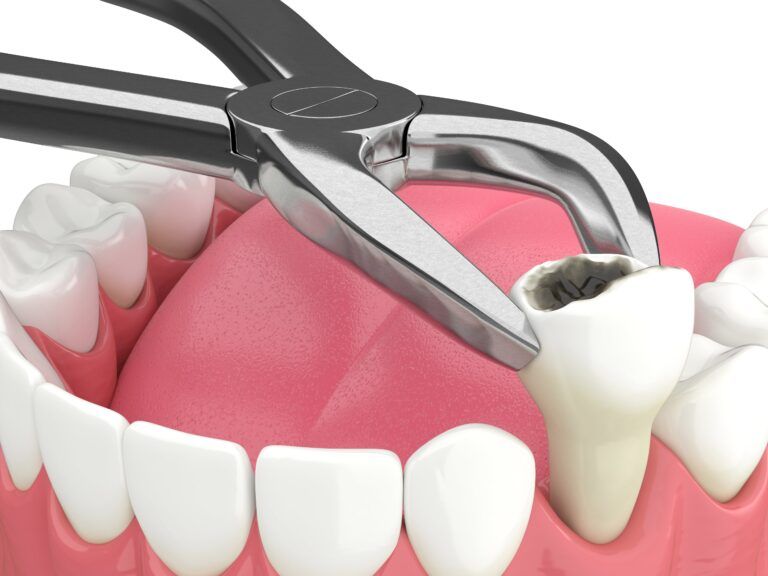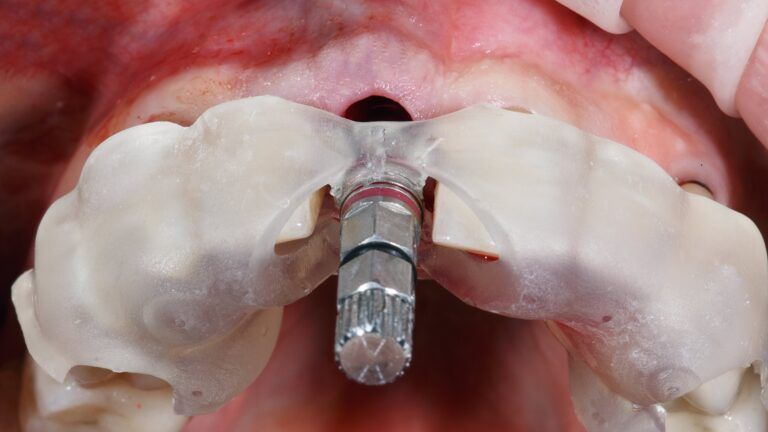When being evaluated for dental implants, your implant dentist will likely request a CBCT scan. If you have never had one of these scans done before, you may be wondering what it is and why it’s necessary. To answer these questions, here is some information about CBCT scans and how they are used by your dentist.
What is a CBCT scan?
3D cone beam computed tomography (CBCT) is an imaging technology that allows dentists to evaluate the underlying bone structure, as well as the nerve pathways and surrounding soft tissues. During a CBCT scan, the imaging machine rotates entirely around the patient’s head. In less than a minute, about 150-200 images are captured from a variety of angles and compiled into a single 3D image.
CBCT scans are quick and in most cases, a full mouth scan only takes about 20-40 seconds. When having a CBCT scan taken, you can expect to be seated while an x-ray arm slowly rotates around your head. To ensure your head remains still during the scan, your dentist may have you rest your head against part of the machine and/or use stabilizers in or around your ears to gently hold your head in place. The scan should cause you no discomfort.

In case you are wondering, CBCT scans do use radiation, however they use significantly less radiation than traditional CT scanners and are considered to be safe. At any given time, we are all exposed to what is known as background radiation. A medical CT scanner produces enough radiation to be equivalent to 63-154 days of background radiation, while a CBCT scan only produces about 6-30 days of background radiation.
Why do I need a CBCT scan?
Now that you have an understanding about what a CBCT scan is and how it works, let’s take a look at just why you may need one. For starters, your dentist will likely recommend a CBCT scan if you are considering dental implants because it can provide a detailed picture of your bones, nerves, and soft tissues. A single CBCT scan can show potential dental issues such as tooth decay, bone loss, abnormal growths, facial fractures, periodontal infections, irregularities of the temporomandibular joint, and problems with the tooth roots or dental pulp. This allows your implant dentist to determine if dental implants can be safely and effectively placed.
Not only are CBCT scans used to determine candidacy for having dental implants placed, but they are also used as part of the treatment planning phase. A large part of successful treatment outcomes involve careful planning before the actual procedure, and CBCT scans allow your implant dentist to do just that. Since a CBCT scan shows all your bones, nerves, and soft tissues in extreme detail, this allows your dentist to establish their approach before they even begin the procedure. Not only that, but it also allows them to identify possible complications ahead of time so that they can take the necessary steps to avoid or minimize these complications. Overall, this means that your implant procedure will go smoother and you are more likely to have a successful outcome.

Irfan Atcha, DDS, DICOI, DADIA at New Teeth Chicago Dental in Chicago, Illinois is a board-certified general dentist and a nationally recognized expert in dental implants, cosmetic dentistry, and sedation dentistry.





